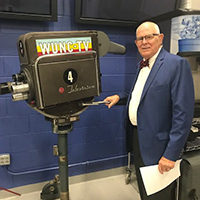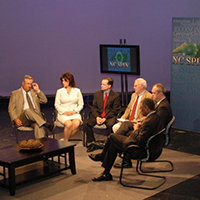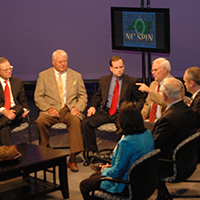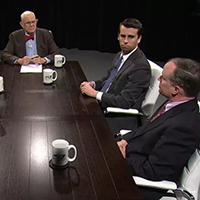Expectations are so low when it comes to funding the state’s court system that a budget without obvious cuts is now lauded as a victory.
“We are pleased that the budget as proposed by the General Assembly recognizes the need for funding the court system,” Sharon Gladwell, communications director for the Administrative Office of the Courts, said in an email.
True, the budget actually funds some of the judicial system’s critical needs, such as paying jury members and interpreters, and tosses some dollars in for the initial stages of the long-overdue overhaul of court technology.
But it comes nowhere near full funding of a court system that has seen its operating budget slashed by more than 40 percent since 2008, more than 600 needed employees dropped from its payroll and successful programs such as drug treatment courts eliminated.
Back at the beginning of the legislative session, Chief Justice Mark Martin characterized the state’s third branch of government as teetering on the brink of a funding emergency.
“I would characterize it as getting fairly close to 911,” Martin said then on “Capital Tonight,” offering up examples: judges on the taxpayers’ dime and attorneys billing their clients waiting to proceed in the courtroom for a court reporter who’s doing double-time elsewhere in the building because of staffing cuts, or jurors possibly serving without pay.
Martin said then that he was confident lawmakers would understand the needs and properly fund the courts, and he went on to ask them for $30 million, “because we need $30 million,” he told WRAL-TV at the time. That was the bare minimum needed to fund the judicial branch, he said.
For a time after, expectations grew that funds close to that amount might find their way into court coffers — after all, lawmakers were touting a surplus — and the House in May proposed $19 million to fund court technology.
The Senate dashed those hopes in June, though, with a budget that barely funded technology and did little more to boost the judicial system’s operating budget.
The end result doesn’t quite amount to the $30 million the chief justice said was critical.
Over two years, the courts will get $3.6 million to jump start an electronic filing system, $9 million to pay their operating expenses and $1.5 million to meet their constitutional obligations to jurors, interpreters and expert witnesses.
Compare those numbers to the $8 million lawmakers in the majority party have set aside to pay their lawyers in cases challenging their legislative agenda, and it’s easy to see that as a group they don’t quite appreciate the chief justice’s plea for help.
Unlike other entities competing for funding, the judiciary is a separate and equal branch of government, and the legislature’s obligation to fund it sufficiently is constitutionally based.
Certainly since 2008, meeting that obligation has been a challenge for lawmakers here and across the country, particularly given the competing demands on limited dollars in the government purse.
What’s often overlooked, though, is that the courts are one of the budget’s largest revenue generators. Monies received by the courts through fees, fines and penalties are remitted to the state general fund, out of which lawmakers then appropriate funds for court salaries and operating expenses.
In recent years, the amounts the courts have returned to the general fund, residents of the state and other entities have dwarfed the appropriations received from the legislature.
In 2013-14, for example, the courts remitted more than $740 million to the state and its residents. In return, they received $456 million from lawmakers to keep the courthouses open, pay personnel and provide constitutionally mandated services.
That appropriation — yet another cut — was far less than needed to meet staffing levels and other necessary expenses as determined by the National Center for State Courts.
And it came at a time when the courts already had little left to give.
By the 2014 legislative short session, the AOC had already met cuts by eliminating more than 600 court positions through attrition, voluntary reductions-in-force and involuntary layoffs. And it all but gave up on requests for technology funds, which had been slashed by 40 percent from $45 million in 2011 to $27 million in 2014.
What’s different, then, about this year’s budget is that a few more of the dollars the court system dumps into the general fund are being returned to it to meet essential needs — but not nearly enough.
With this budget, the courts will get nothing to meet those needs.







